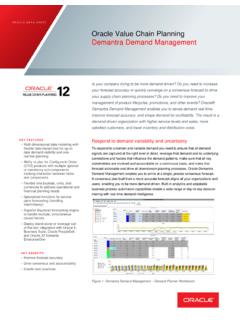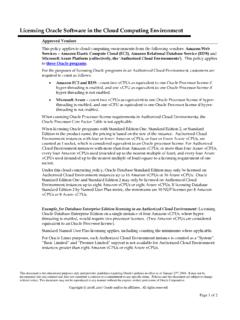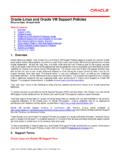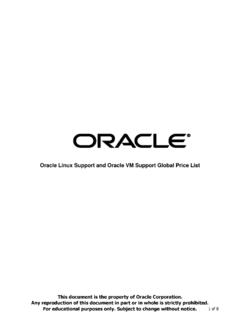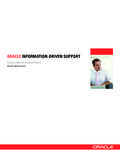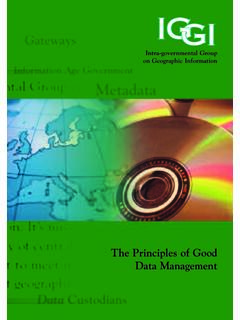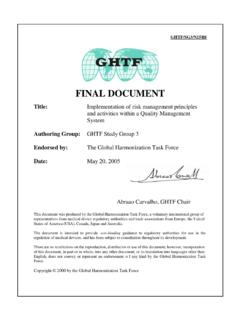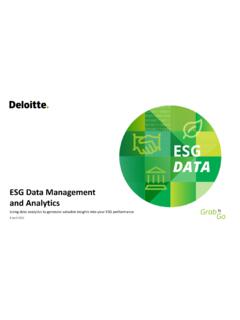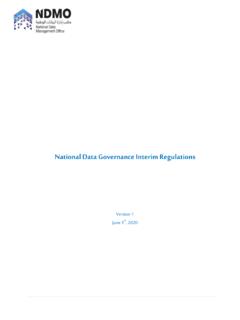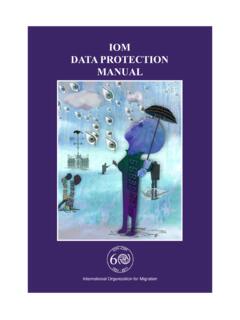Transcription of Information Management and Big Data: A Reference ... - …
1 An Oracle White Paper February 2013 Information Management and Big data A Reference architecture Information Management and Big data , A Reference architecture Disclaimer The following is intended to outline our general product direction. It is intended for Information purposes only, and may not be incorporated into any contract. It is not a commitment to deliver any material, code, or functionality, and should not be relied upon in making purchasing decisions. The development, release, and timing of any features or functionality described for Oracle s products remains at the sole discretion of Oracle.
2 Information Management and Big data , A Reference architecture Introduction .. 1 Background .. 3 Information Management Landscape .. 3 Extending the Boundaries of Information Management .. 4 Big data Opportunity in Customer Experience Management .. 5 Information Management Reference architecture Basics .. 9 Knowledge Discovery Layer and the data Scientist .. 10 Knowledge Discovery Layer and Right to Left Development .. 12 What is Big data ? .. 14 Big data 16 Big data and the IM Reference architecture .. 18 Knowledge Stripping Find the ROI Approach.
3 18 Knowledge Pooling Assume the ROI Approach .. 21 Choosing the Right Approach .. 23 Big data needs Big Execution and Agile IM .. 24 Cautious First Steps .. 25 Conclusions .. 27 Finding out more about Oracle s IM Reference architecture .. 28 Information Management and Big data , A Reference architecture 1 Introduction In the original Oracle white paper on Information Management Reference architecture we described how Information was at the heart of every successful, profitable and transparent business in the world something that s as true today as it was then.
4 Information is the lifeblood of every organization and yet Information Management (IM) systems are too often viewed as a barrier to progress in the business rather than an enabler of it. At best IM is an unsung hero. What has changed in the last few years is the emergence of Big data , both as a means of managing the vast volumes of unstructured and semi-structured data stored but not exploited in many organizations, as well as the potential to tap into new sources of insight such as social-media web sites to gain a market edge. It stands to reason that within the commercial sector Big data has been adopted more rapidly in data driven industries, such as financial services and telecommunications.
5 These organizations have experienced a more rapid growth in data volumes compared to other market sectors, in addition to tighter regulatory requirements and falling profitability. Many organizations may have initially seen Big data technologies as a means to manage down the cost of large scale data Management or reduce the costs of complying with new regulatory requirements. This has changed as more forward-looking companies have understand the value creation potential when combined with their broader Information Management architecture for decision making, and applications architecture for execution.
6 There is a pressing need for organizations to align analytical and execution capabilities with Big data in order to fully benefit from the additional insight that can be gained. Received wisdom suggests that more than 80% of current IT budgets is consumed just keeping the lights on rather than enabling business to innovate or differentiate themselves in the market. Economic realities are squeezing budgets still further, making IT s ability to change Information Management and Big data , A Reference architecture 2 this spending mix an even more difficult task.
7 For organizations looking to add some element of Big data to their IT portfolio, they will need to do so in a way that complements existing solutions and does not add to the cost burden in years to come. An architectural approach is clearly what is required. In this white paper we explore Big data within the context of Oracle s Information Management Reference architecture . We discuss some of the background behind Big data and review how the Reference architecture can help to integrate structured, semi-structured and unstructured Information into a single logical Information resource that can be exploited for commercial gain.
8 Information Management and Big data , A Reference architecture 3 Background In this section, we will review some Information Management background and look at the new demands that are increasingly being placed on data Warehouse and Business Intelligence solutions by businesses across all industry sectors as they look to exploit new data sources (such as social media) for commercial advantage. We begin by looking through a Business architecture lens to give some context to subsequent sections of this white paper. Information Management Landscape There are many definitions of Information Management .
9 For the purposes of this white paper we will use a broad definition that highlights the full lifecycle of the data , has a focus on the creation of value from the data and somewhat inevitably includes aspects of people, process and technology within it. While existing IM solutions have focused efforts on the data that is readily structured and thereby easily analysed using standard (commodity) tools, our definition is deliberately more inclusive. In the past the scope of data was typically mediated by technical and commercial limitations, as the cost and complexities of dealing with other forms of data often outweighed any benefit accrued.
10 With the advent of new technologies such as Hadoop and NoSQL as well as advances in technologies such as Oracle Exadata, many of these limitations have been removed, or at the very least, the barriers have been expanded to include a wider range of data types and volumes. As an example, one of our telecommunications customers has recently demonstrated how they can now load more than 65 billion call data records per day into an existing 300 billion row relational table using an Oracle database. While this test was focused very squarely at achieving maximum throughput, the key point is that dealing with millions or even billions of rows of data is now much more common place, and if organised into the appropriate framework, tangible business value can be delivered from previously unimaginable quantities of data .
